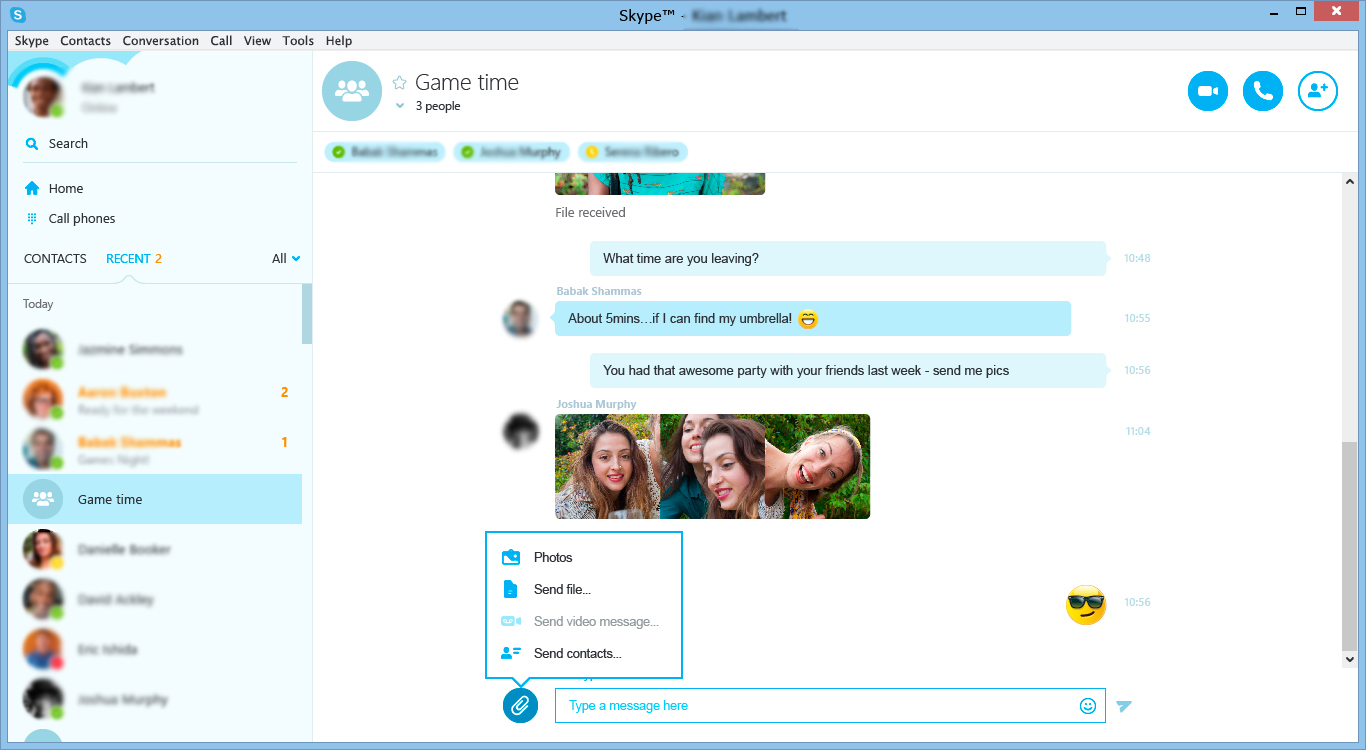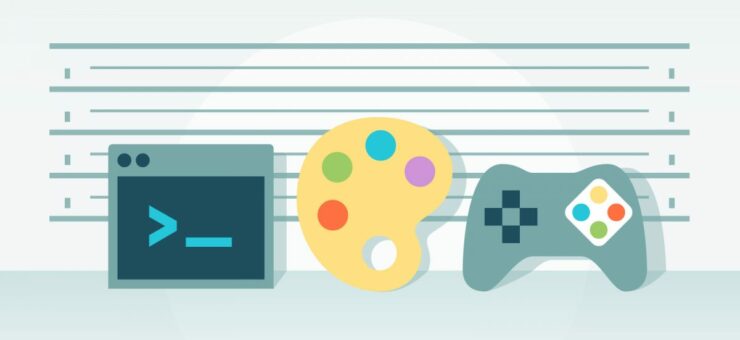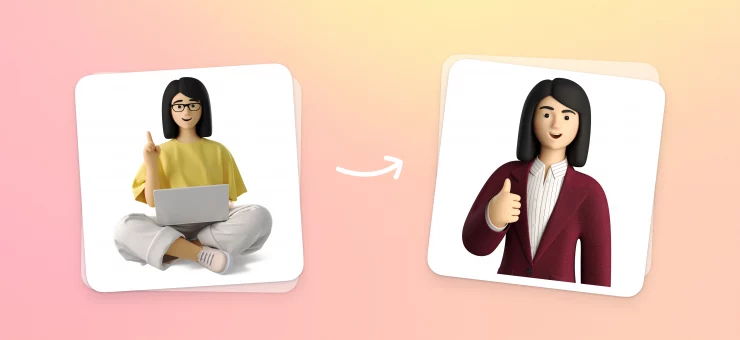Icons8 is a fully remote company. During my years of work at it, we’ve grown from having just six people in the morning Skype call to more than 45–all trying to wedge into a 2-hour Zoom meeting.
Having your colleagues scattered all around the globe within 24 different time zones presents a number of challenges for your team collaboration. However, one particular challenge I’m going to be talking about in this article is deceivingly trivial but has lasting after effects for your company culture, your relationships with colleagues, and, of course, the universe.
“Plugs in a movie trailer music”
The challenge is… Choosing a messenger.
Our messengers are our virtual offices, our ultimate collaboration tools. Every messenger has tiny details that affect the way we talk to our colleagues and even how often we do that. For example, how often do you say “Hi” to your colleagues out of blue? When we work in the office it happens spontaneously, and if it doesn’t you’re probably having a bad day. However, we rarely say “Hi” when we see someone popping online for the first time, do we? Let’s call it:
Random Interactions [?] /on a scale 1 to 10, e.g. in the real office: 10
Another parameter is short-term team collaboration. How easy it is to gather a few people around? Again, in the office, it’s easier than ever – just come up to the person and find a vacant room. But what about online collaboration tools?
Short-term Collaboration [?]
Lastly, long-term collaboration. How easy it is to pick up on your previous projects and ideas? To make people work on the same thing and discuss it for prolonged periods of time. In the office, that would be… actually, low. I can’t think of any onsite interaction that benefits that effect. However, in different messengers this parameter varies greatly, as you’ll see.
Long-term Collaboration [?]
At Icons8, we’ve tried a bunch of messengers through the years. We were looking, we were testing, we were having fun. This article is about what we’ve found in each of them and how they changed or enhanced our team collaboration.
Skype
Random Interactions [2]
Short-term Collaboration [7]
Long-term Collaboration [5]
At the start, Skype was the cornerstone of our team communication. We would call each other using Skype, we would write to each other, and we had different groups for different discussions.
However, it had its drawbacks.
The short-term collaboration was pretty easy – everyone was one phone button away. After all, Skype was created to make calls. However, I wouldn’t give Skype a 10 on that, because often the status of a person was unclear – they are either away, or offline? Perhaps, it had to do with the fact that Skype wasn’t good with managing multi accounts, e.g. one for work and one personal. You always risked being called by someone while working, so people could deliberately turn off their Skype or put up DnD mode. However, I like Skype because it just feels right to call a person rather than to write to them. And that’s a plus because voice team communication is especially important for remote teams – to prevent isolation and keep everyone engaged.
Short-term collaboration: [7]

We created a few main channels like “Meeting room” and “Programmers room” and used them for our discussions. However, in Skype UI, all your personal contacts, conversations and group chats get mixed up in a single feed. That is why we weren’t creating new groups for any new projects, because that would overwhelm us. New projects and discussions lived in colleague’s minds and maybe their to-do-lists, both of which were hard to get at. So it was difficult to follow-up on our conversations. You can’t pin important messages in Skype either, so if no one saved the idea, it will probably be lost.
Long-term collaboration [4]
Now, about random interactions. Again, due to being unable to effectively manage personal and work accounts, most of us used our personal accounts. That’s why Skype always seemed more… intimate. In a way, it actually felt even harder to call colleagues. Paradox, right? If anything, Skype was made for calls. Calling someone or even writing a message often felt like walking through the door without ringing the bell. That’s weird for online collaboration tools.
Random interactions [3]
Resume: compared to other messengers, we talked in Skype the least, both in voice and chat. Our standard meetings were prolonged because we tried to discuss many things at once, but ultimately they were unproductive and we often couldn’t follow up on what we discussed.
Many teams start in Skype and never move on because they get used to it, especially if the team stays the same size. Our team quickly grew, so working in Skype became an organizational nightmare and we decided to move on.
Sococo
Random Interactions [9]
Short-term collaboration: [10]
Long-term collaboration: [1]
After there were a dozen of us, we went on trying other messengers. And Sococo was one of the first things we tried. Personally, I liked it a lot.
Random interactions – this is the only messenger I’ve ever seen with a real watercooler in it. And you can actually go there. You can design as many coffee-break rooms as you like (I’m not an advocate for coffee nor spending work time drinking it, but it’s crucial to have at least one of those for overall team morale & improving team relationships).
Random Interactions [8]
In Sococo you can actually see what everyone is doing – and that’s great for short term collaboration. In fact, I think it’s the way it has to be – you clearly see the status of every person and talking to someone is a matter of one button. One click, and you can have a meeting with everyone present. And other people can see the meeting and ask to be included. E.g. I always had something to discuss with my marketing team, so if I ever saw them hanging out somewhere I’d probably tune in.
Short-term collaboration: [10]

As for the long-term collaboration, that’s where we didn’t like it. At the time (not sure about now), the chat was poorly designed and it was hard to track different conversations and follow-up on them. Many integrations (e.g. with Slack) were only in the making, so we had no choice but to move on.
Long-term collaboration: [1]
Resume: first few days we were just having fun – randomly knocking on each other’s doors, switching between meeting rooms and a water cooler… I even remember the first time actually seeing two programmers working in pair and realizing how diverse team experience can be. I was feeling more… Attached to my colleagues seeing them all ultimately working on the same thing – making our startup better. Had we use Sococo a little longer I’m sure the amount of these random interactions and the feeling of “we’re all in it” would only grow. During the month we used it I had an enormous amount of voice conversations with everyone and the least amount of chat messages.
Overall, with proper chat management, I truly believe Sococo had great potential as a team communication app. People just needed to get used to it. I can think of no other service closer to the perks of a real office. And you don’t have to listen to someone finishing their coke in the next cubicle.
Slack
Random interactions: [5]
Short-term collaboration: [6]
Long-term collaboration: [10]
Eventually, we moved to Slack and we’re using it to this day for its effective team communication. But it has its drawbacks as well. Voice communications were Slack’s weak point since day 1, so we had to set up an integration with Zoom. Even when Slack finally added phone calls, it’s still far from great. You can see when a person is on a call, but you can’t see with who, like in Sococo, for example. Privacy of work-related communications is a double-edged sword, yet often in the real office, we always see who our colleagues are speaking with and can decide to either nip into the conversation or let it slide.
However, it’s easy to create local chat-groups to discuss something quickly, which makes it convenient for short-term chat collaborations. And if anything, that’s what you’re supposed to do there mostly – chat.
Short-term collaboration: [6]

As for the long-term collaborations, this is where Slack shines. Each project can have its own channel, important messages can be pinned and all kind of notifications can be set up using a wide array of extensions available for Slack. It’s very easy to put all your ideas into a written form for everyone else to see, and with “Message Thread” to discuss on.
Long-term collaboration: [10]
Talking about random interactions–it’s a huge plus that you can join any open channel in Slack. Also, it’s easy to set up new channels, so you can always add a “book readers” channel, or “programming buddies”. With proper extensions, you can always enliven those and spark random conversations with your team. However, those will mostly not be work-related. Again, voice communications related to work is where collaboration magic happens the most, I believe.
Random interactions: [4]
Resume: In Slack, we chat a lot. There are not many random voice calls though. We use Zoom integration for our meetings and they are very organized. In order to gather people together, we schedule all our meetings in advance so there are not many unexpected interactions in our daily work, and all of them happen in the chat threads. It’s yet to be discussed if it’s an optimal remote experience or just the way things work now. Extraverted people will always find a way to share their opinion, however, introverts may have problems voicing it in such a rigid environment – in order to do that you have to schedule a meeting or create a thread without even knowing if people will read it.
Discord
Random interactions [7]
Short-term collaborations [9]
Long-term collaboration [8]
Here’s the thing: Icons8 never used Discord and pretty much settled on using Slack. But I had the opportunity to try it out with other teams and it has some really cool features.
Mostly, Discord is a Slack, only more gaming-oriented. It works like Slack, it has all the same features, it’s just most of its extensions are gamer-oriented, e.g. who plays what now, who streams what.
However, it has some great features of its own. And first, voice channels.

31 people on French voice chat…
These voice channels are always active – they are like glass-walled rooms in the real office – you can always see who’s sitting there and tune in. That’s great for both random interactions and short-term collaborations.
Random interactions [7]
Short-term collaborations [9]
As for the long-term collaborations, again, Discord can do everything Slack does. Pin important messages, create new chat rooms, etc. However, there are no threads and not many work-related extensions, so my rate is a bit lower than that of Slack:
Long-term collaboration [8]
Resume: we may actually try using Discord as our main team communication app. Sometimes even seeing other people talking about something motivates you to bring more to the table, and with proper culture management, people may actually learn to nip into such conversations and bring more value in unexpected ways.
If your startup has a funky atmosphere and playing games is one of the forms of team building in your team – Discord will be your best option.
Afterword
You might be thinking that all messengers are the same and I’m just nitpicking. You may even be right, as most of the ideas presented in this article are more of an account of my own subjective experience of communicating with my team. We don’t have tools yet to properly measure things like “engagement”, “collaboration” and other parameters to see how UI and UX of different communication tools affect us.
However, I’m sure in the future we will have more data and one day you may read the article “Slack increased remote team efficiency by 8% by adding voice channels” or “Analytical startups report increased collaboration after Skype made its ‘Call’ button 21% bigger”. Who knows?
What messengers have you tried and can you tell me if it changed your experience within a team? I’d love to hear your stories in the comments.
About the author: Andrew started at Icons8 as a usability specialist, conducting interviews and usability surveys. He desperately wanted to share his findings with our professional community and started writing insightful and funny (sometimes both) stories for our blog.
Title image: Ouch! Icons8 illustration project



